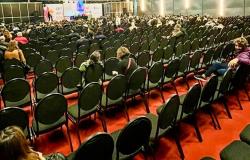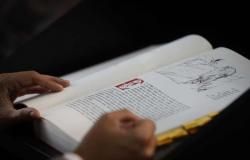There are books that in a few pages contain an endless number of worlds, not only because of what they tell, but also because of the variety of representations and imaginaries that they activate. red pavilionby Cristina Iglesia (narrator and researcher in Argentine literature), is one of those.
In this autobiographical story there are two Corrientes women – mother and daughter – fascinated with China (both also received the nickname “China”), although this coincidence was not simultaneous or for the same reasons. The origin of this family curiosity lies in the voracity with which the mother read the novels of Pearl Buck (an American who lived in the Asian country and recounted the lives of its inhabitants), and which led her to pepper her family interactions with observations that “ They burst in unexpectedly at any time and about anything” on those oriental children “who suffered a lot but never had rewards.”
Furthermore, when the narrator was 3 years old, her parents went to China one summer, partly so that her mother could satisfy her interest in that country and in Buck. At the same time, her daughter, in the 1960s, and already in Buenos Aires, began to join Maoism, driven by Mao Tse Tung and his model of cultural revolution.
However, the story took a while and could only be written decades later, during the pandemic, when the author returned to that period based on a fleeting insight she had had on her trips on the train that connects Paris and Lille. And the form she found was fragmentary narration, like a shoujuan: scenes from a roll of tissue paper that are revealed, one by one, on a polished wooden table.
What could he have started to tell? He began as a teacher in a small town in Chaco, Santa Sylvina, from which he had to escape with his partner due to the accusation of being communists; his subsequent arrival in Buenos Aires; His entry into militancy was driven by the desire to “be part of the flow of History” and change the world. What was the life of a militant like in the effervescent context that would lead to the events in Ezeiza and years later in the military coup: the protocols for meeting, the comings and goings to deceive surveillance, the constant fear because each exit could be the last . And, among others, who guaranteed that the messages that the party comrades brought from the East had been well understood and were faithfully communicated? Since the Chinese “spoke and wrote with metaphors,” the protagonist confesses that, when communicating the direction to follow, “most of the time I freely invented my own translations of Chinese metaphors,” and over time “I invented metaphors.
red pavilion It is a book about what children inherit from their parents, but also about the short circuits and misunderstandings that surround any other form of transmission: political, cultural, ideological. Whoever says something must accept that, in a certain way, he is speaking or translating from Chinese.
- red pavilion. By Cristina Iglesia. Nudist Publishing. 130 pages. $13,600






